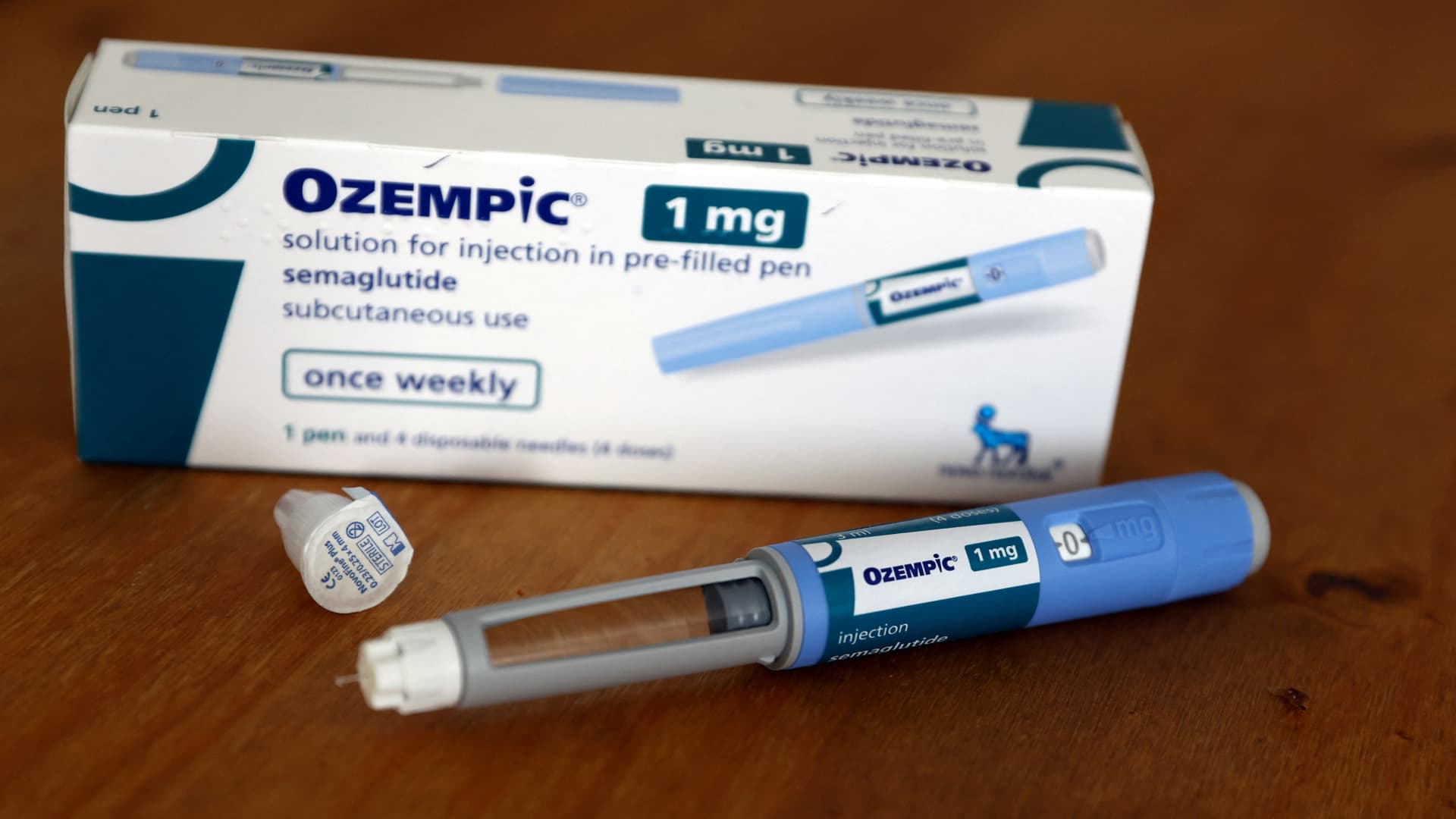Products You May Like
The blockbuster diabetes drug Ozempic could be manufactured for less than $5 a month, even as Novo Nordisk charges close to $1,000 per month for the injection in the U.S. before insurance, a study released Wednesday suggests.
The study, from researchers at Yale University, King’s College Hospital in London and the nonprofit Doctors Without Borders, raises more questions about the hefty price tag of the top-selling diabetes treatment and similar drugs for weight loss, which are all part of a new class of treatments called GLP-1s.
Demand for those medicines has soared over the last year, even as more insurers drop them from their plans due to cost, leaving some patients unable to afford the drugs.
The study also comes after years of political pressure on Novo Nordisk and other drugmakers to slash high costs of diabetes care, especially insulin.
Ozempic can generally be produced for less than various forms of insulin, according to the study published in JAMA Network Open.
Researchers found that a month’s supply of the treatment could be manufactured for an estimated 89 cents to $4.73. They evaluated manufacturing costs for the weekly injection along with a profit margin with an allowance for tax to produce those estimates, which they call “cost-based prices.”
Novo Nordisk’s list price for a monthly package of Ozempic is $935.77 before insurance and other rebates. The findings suggest that GLP-1s “can likely be manufactured for prices far below current prices, enabling wider access,” the researchers concluded.
In a statement on Wednesday, Novo Nordisk declined to provide production costs for Ozempic and its weight loss drug counterpart Wegovy. But the Danish drugmaker noted that it spent almost $5 billion on research and development last year, and will spend more than $6 billion on a recent deal to boost manufacturing to meet demand for GLP-1s.
It also said 75% of its gross earnings go to rebates and discounts to ensure patients have access to its products.
The company also said out-of-pocket costs for Ozempic depend on a patient’s insurance coverage. Patients with private or commercial coverage for Ozempic can access a savings card and pay as little as $25 for a one-month, two-month or three-month supply of the treatment for up to 24 months.
Separate research from the University of Liverpool and other researchers has found that Wegovy could be produced for $40 a month.
A survey released this month from Evercore ISI found that more than half of people currently taking a GLP-1 said they are paying a monthly price of $50 or less out of pocket. Nearly 75% of respondents who used to take one of the drugs said they spent the same amount.
